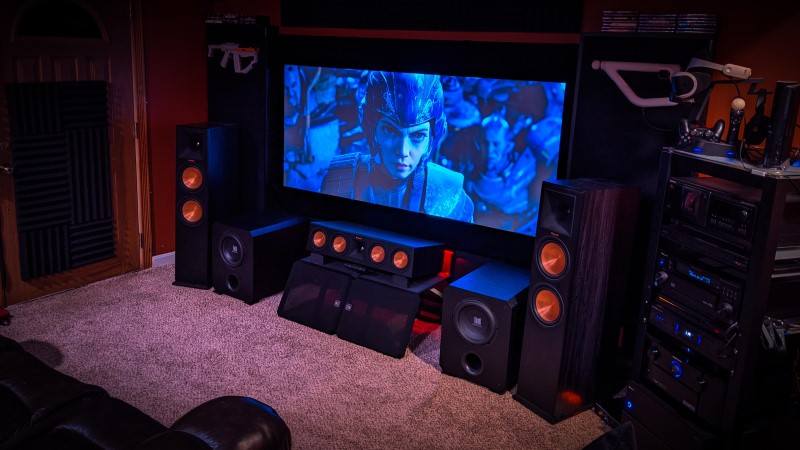When Should You Set Your Speakers to Large?
When you run your room setup program on your AV receiver, it is almost inevitable that it will set some of your speakers to “large.” Sometimes, it is comically wrong. It’ll be one of your small, satellite speakers that just so happens to be close to a wall. But other times it makes more sense. Usually, your front left and right speakers. You might even have tower speakers. Those are physically large, right? Shouldn’t they be set to large? Well…no. Let’s discuss.
What It Means When You Set Speakers to Large
When you set a speaker (or speakers) to “large” in the menu of your AV receiver, you are telling it that those speakers can handle ALL of the bass. As we’ve discussed, the LFE channel (the .1 in the 5.1 or 7.1 setup) will still go to the subwoofer. But all bass that was mixed into the channel where a speaker is set to large will get all of that bass. You are essentially telling your AV receiver that your speaker is full range.
It almost always isn’t.
When you set any speaker to “small,” you are telling your AV receiver that those speakers cannot play the lowest bass. The AV receiver will send any low bass (below the crossover point) to your subwoofers.
What About…
Thus begins the litany of excuses for why someone really does have “large” speakers. I have tower speakers. My speakers have drivers that are larger than 6″ across. They have built-in powered subwoofers. The cavalcade of reasons never ends. Everyone seems to think they have “large” speakers. But here is the thing:
It doesn’t matter!
I don’t care if you have speakers the size of moving vans. I don’t care if they have their own amps, 200 drivers, and can hit 1hz. The reason to set your speakers to small ISN’T because of the size of the speakers or even how low they can play.
It is about their location.

Why You Should Set EVERY Speaker to Small
Setting your speakers to small is a good thing because your room and your subwoofers work together to create the bass you hear. Your subwoofers should be placed optimally for creating that bass. Your speakers? They are placed for creating a convincing surround effect. Those two locations? They are different.
Even if your speakers are physically large and are capable of playing the lowest bass, you don’t want them to. They are simply in the wrong locations. In a normal home theater, the best placements for your subwoofer are often across the room from each other. Your front left and right speakers (the ones that are often the only speakers that approach the classification of “large”) would not sound so great in those locations.
Why Does the Auto-Setup Set Some Speakers to Large?
Your automatic setup program isn’t as smart as you may think it is. It runs using very simple algorithms. If a speaker happens to measure within a certain range, it will set it to large. It is as simple as that. Given what we’ve said above, why would it ever set anything to large when it really shouldn’t? Well, the first reason is simple – many people don’t understand how bass works. They would be upset (and maybe return their AV receiver) if it refused to set their tower speakers to large.
The second reason is more…well…reasonable. If you don’t have a subwoofer (selected “none” for subwoofer), the bass has to go somewhere. In that case, it will force you to set your main (left and right) speakers to large so that they can receive the bass. Even if those speakers are very tiny. Again, manufacturers know that if they start deleting sounds, someone is going to get upset and complain online.
Wrap Up
No, you are not “wasting” the performance of your floorstanding speakers (we do recommend bookshelf speakers more often, but not to the exclusion of towers). Tower speakers can get louder in that all-important crossover region. In large rooms, this is especially important. Just leave the really low bass for the subwoofers. It’s what they do best, they are best placed for it, and you spent the money on them. Why mess up that bass by setting any of your speakers to Large?


